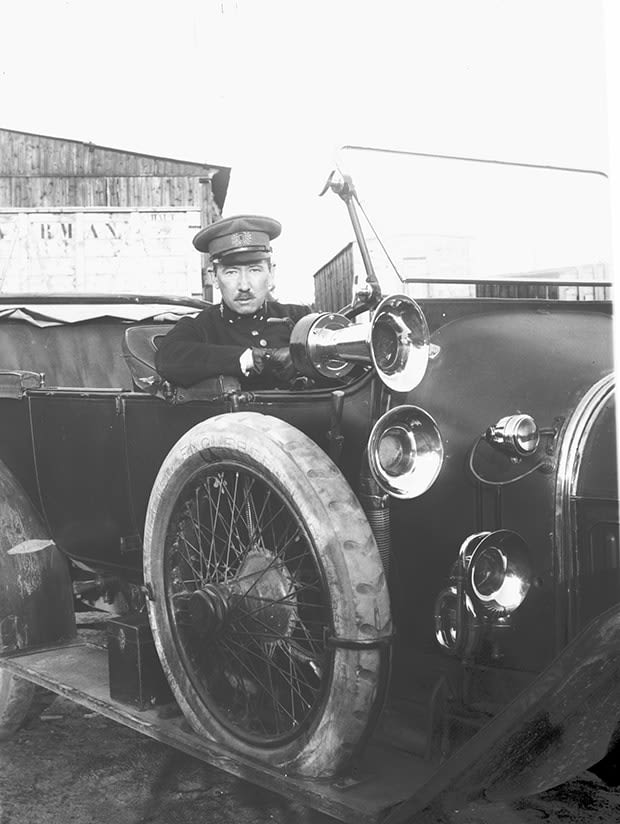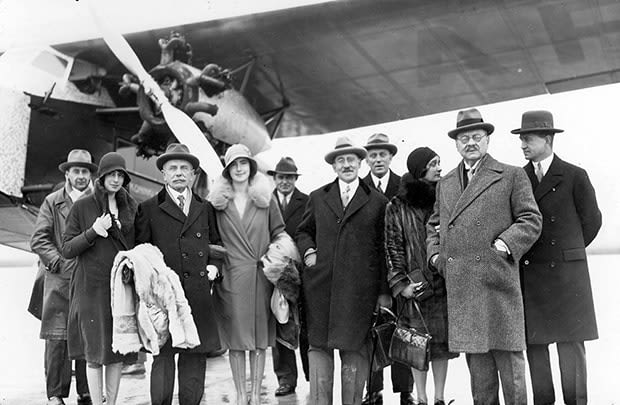What's in a name? All about our street names - 2
Streets, roads and squares: they all need to have names, at Schiphol too. How are you supposed to find your way otherwise? Some are wide avenues, others are a bit hidden behind rows of offices, but they often tell an interesting story. A story we're proud of. Here's part 2 of our series about street names.
Hendrik Walaardt Sacré (Street)
Unfortunately, we'll never know what Farmer Knibbe from Haarlemmermeer was thinking when a serviceman with a striking mustache walks onto his land close to Fort Schiphol at the start of 1916. This man is Hendrik (Henk) Walaardt Sacré, commander of the Aviation Division (LVA), established a few years earlier, now known as the Royal Air Force.
Walaardt Sacré is looking for a location for a new military air base. The men come to an agreement: a little over 55,000 guilders (more than €450,000 today) for 12 hectares of land, which is around eighteen football pitches. Without realising, Walaardt Sacré lays the foundation of the Schiphol we know today.
E. L. T. A. (Street)
These days, flying is the most normal thing in the world. A century ago, however, it was an exciting and exclusive adventure. To bring this new mode of transport to the attention of the general public, the First Air Traffic Exhibition Amsterdam (E.L.T.A.) takes place in the summer of 1919. And it was a great success; some half a million people attend the six-week event.
It wasn't held at the Schiphol military air base but at a specially-constructed expo site in Amsterdam North, where the Fokker factory would later be built. Enthusiasm grows and shortly after KLM is founded. The rest is history.
Piet Guilonard (Road)
The E.L.T.A. didn't just boost the Dutch aviation industry. Piet Guilonard's career also gained considerable momentum. Although originally trained as a machinist in the navy, the Brielle-born aviation enthusiast doesn't want to miss the exposition in the nation's capital.
There, he meets KLM founder Albert Plesman, who in 1921 hires him as head of the technical department of his brand-new airline. In 1935, Guilonard is appointed deputy director of the company. Sadly, he dies in a plane crash in the United States a few years later. The newspapers speak of 'a tragic loss for aviation'.
Sir Frank Whittle (Street)
He may not be directly connected to the history of Schiphol, but Sir Frank Whittle's work has had a profound influence on aviation in general. Born in Coventry (England), Whittle was one of the inventors of the jet engine. He put his ideas for this revolutionary new type of propulsion on paper as early as 1928. But it was not until World War II broke out that the British government got seriously involved in the development.
The jet engine has an indelible impact on military and civil aviation. Thanks to this invention, planes can carry more passengers and, even more importantly, fly faster. Whittle's innovation halves the flight time to New York, for example. He was knighted for his merits in 1948.
This blog is the second part in a series about street names at Schiphol. Curious about part 1? You can find it here.
Read the previous blogs
-
A day in the life of... a marshaller
Published on:Guiding planes at Schiphol and helping pilots park at the gate? Being a marshaller is certainly an exciting job! But there’s much more to it.

-
Flying eye-catchers attracting a lot of attention
Published on:We see a large number of aircraft at Schiphol. So we're not that easily impressed, but sometimes special planes come along that do attract a lot of attention.

-
Celebrating 750 years of Amsterdam
Published on:Starting from 27 October 2024, Amsterdam is going to be celebrating its 750th anniversary. We have put together a list of Amsterdam highlights worth visiting.




